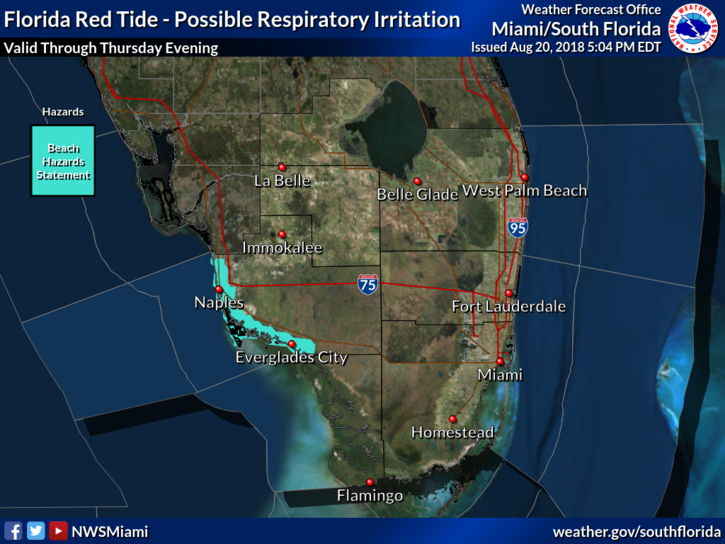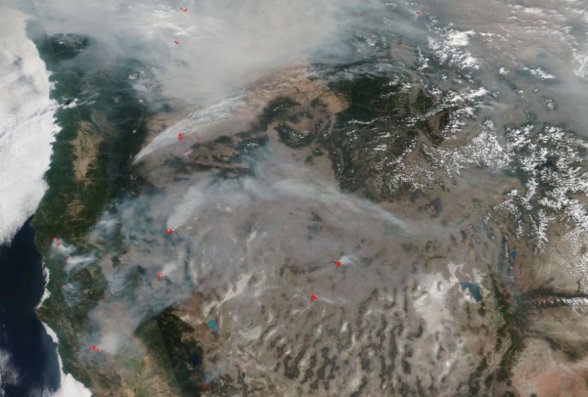
Red tide will continue to plague Florida’s southwest coast from Everglades City to north of Naples. Click here to check on conditions at specific beaches. (Image credit: NWS-Miami)
The National Weather Service in Miami issued a Beach Hazards Statement through Thursday night for red tide affecting areas of Florida’s Southwest Coast. Red tide has been a recurring problem this summer as it not only triggers fish kills, but can cause respiratory irritation in some people.
Like the wildfires in California and the western U.S., Florida’s red tide outbreak has made national news.
The Washington Post reported last Tuesday: “Florida declares a state of emergency as red tide kills animals and disrupts tourism”
The emergency was declared in seven counties from Tampa Bay south to Collier County.
“The red tide has made breathing difficult for locals, scared away tourists, and strewn popular beaches with the stinking carcasses of fish, eels, porpoises, turtles, manatees and one 26-foot whale shark,” the newspaper reported.
*
RADAR BLACKOUT: The radar in Jacksonville was still out Tuesday morning as technicians scrambled to make repairs after a lightning strike over the weekend. Severe storms hit the area and a record wind gust was reported in Jacksonville. The National Weather Service said radar would likely be down through Tuesday night or even Wednesday.
*

There’s not much relief in sight for the smoke and wildfire problems in the West, forecasters say. (Image credit: NASA)
BLANKET OF SMOKE: Almost 2 million acres across the western U.S. have burned this summer, or are actively on fire, causing the region to be shrouded in smoke. The crisis isn’t restricted to California. Six large fires broke out over the weekend in Idaho, Nevada and Oregon.
Riding the jet stream, some of the smoke has traveled as far east as the East Coast, according to NASA.
Showers and thunderstorms forecast in Montana and Idaho could actually make things worse, with more lightning strikes.
“With the center of the high pressure area located mostly over southern California, the normal wind flow will be suppressed and the rain that might come to this area will be contained mainly in areas near the Mexican Border, which will not help firefighting efforts,” NASA reported Monday.

